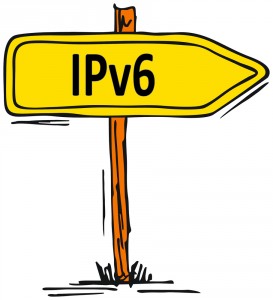The main reason why the IPv6 has become important is because the IPv4 is gradually running out of IP addresses. The IPv4 has approximately 4.3 billion IP addresses and in view of the fact that almost every device today is connected to the Internet, the numbers of IP addresses have automatically got exhausted. The IPv6 has therefore become necessary because it will offer many times more IP addresses to keep pace with the growing demands.
How is the IPv6 better than the IPv4?

• To start with, when you can expand the IP address pool, you will enjoy many benefits; earlier, the scarcity of IP addresses meant that most of the Internet would depend on Network Address Translation or NAT. However, with IPv6, almost each device can own its unique IP address. Unlike the IPv4 which largely relied upon the NAT and PAT or Port Address Translation, the IPv6 makes use of global addresses and will not depend upon the NAT at all
• For the IPv4, each time a data packet crossed the NAT middle box, the address of the packet source had to be rewritten and the TCP or UDP source port had to be changed. This packet gets forwarded to the IPv4 address and the NAT or PAT system will have to maintain connectivity and reverse the process to ensure that return traffic is able to reach the packet source. Today however, different applications will create different connections and they will have a huge number of users for a single NAT or PAT. This will automatically result in congestion for the TCP or UDP space and the limited IPv4 addresses. This may lead to latency and cause jitters to the IPv4 packets. So, the IPv6 is a definite advancement over the IPv4 because it will not need to use any NAT or PAT mechanism; it can restore the end-to-end nature of IP protocols.
Read More at : Technological Prerequisites for Migrations from Ipv4-Only to Dual Stack to IPv6-Only
• The IPv4 has been designed when the WAN transmission links had been prone to bit errors. So, the IPv4 will use a header checksum in order to detect errors in fields on the header. In IPv4, every packet has to be forwarded through a three-layer hop and the Time To Live or TTL value gets lessened by one. The router must re-compute header checksum along every transmission path. There will be separate methods for detecting errors at different layers; this means that there is plenty of checking to understand if bit errors have occurred. This adds to protocol overhead and can affect performance. In comparison, IPv6 was produced at a time when transmission links were being improved. So, there are high-end copper connections and fiber optic cables which have better error rates compared to the cables of the eighties. The IPv6 will not have header checksum; it uses Hop Limit value inside the header which is decremented for each Layer-3 hop but it will not lead to header checksum calculations.
• While the IPv4 packets can be of different lengths, the basic IPv6 packet header is fixed. Although the IPv6 packets can be larger, there is hardly any performance difference.
• The features of IPv6 protocol guarantees that it is far more secure compared to IPv4. The authenticity and integrity of every IPv6 packet has been secured through encryption and proper methods to prevent packet spoofing. So, IPv6 is far better at making sure that the web traffic is directed to the right destination without getting intercepted.
• Both the IPv4 and the IPv6 have identical transport layer protocols; both use UDP and TCP packets. There are UDP checksums for IPv6 and TCP checksums for IPv4. These are functionally equivalent but computations of the checksum are lightly different.
• There are numerous tests to test the end-to-end IPv6 and IPv4 connectivity, throughput, speed, packet loss etc. You can use many network tools for testing the end-to-end connectivity to get performance statistics, such as tracerroute, ping, Microsoft pathping, pchar, iperf, Cisco IOS IP SLA etc.
To conclude, the IPv6 may often be slow for your business depending on the kind of operating system you use, your applications and networking equipments and Internet connectivity. But when you have a robust ISP and native IPv6 connectivity, you will get better performance. At the same time there are plenty of sites and content developers that do not use IPv6. IPv6 is designed to speed up data transmission because it can handle packets better and more efficiently; it can eliminate the need to check for packet integrity.
This, in turn, will free up valuable router time which can be utilized well for moving data. When you have unique IP addresses, businesses will not need to depend on NAT for connecting to the web. The IPv6 can successfully do away with address conflict problems which are common to the IPv4. It paves the way for streamlined connections and faster communication for modern devices.






 Live Chat
Live Chat